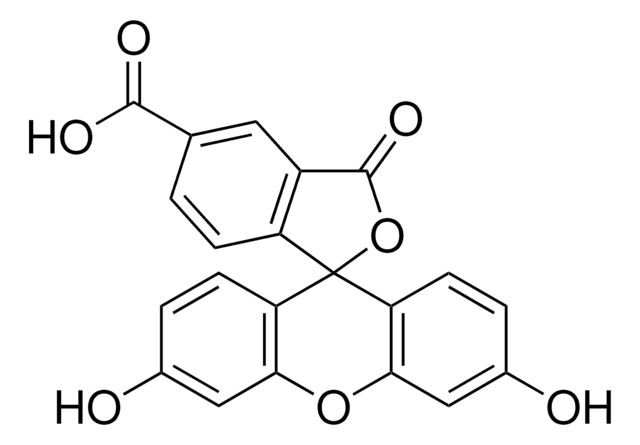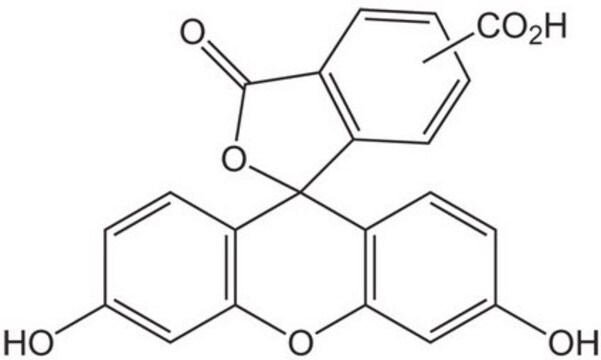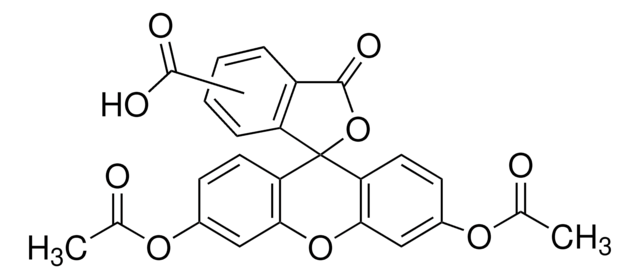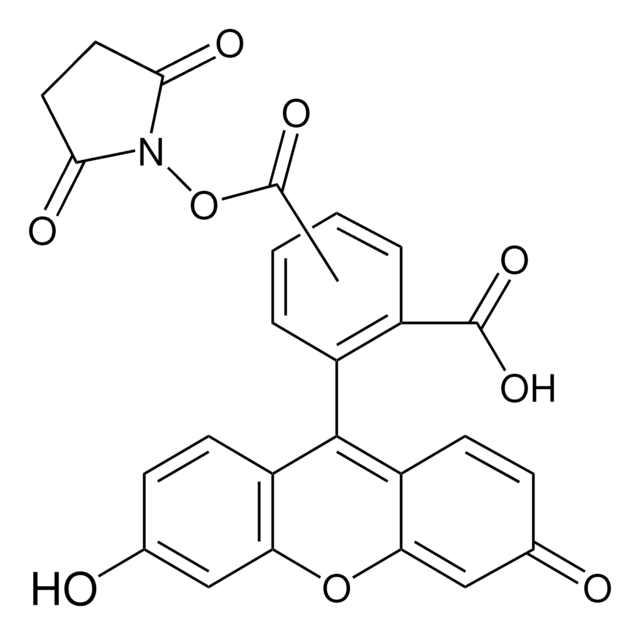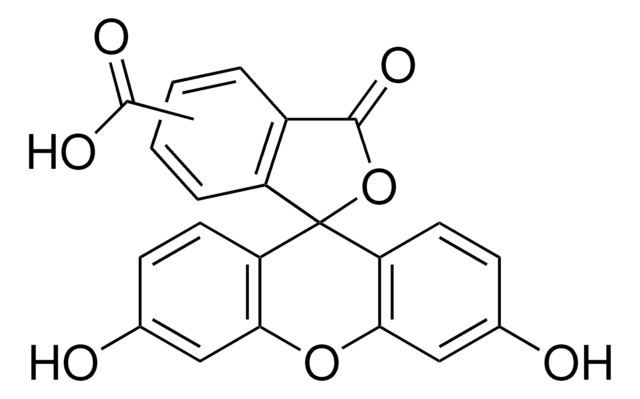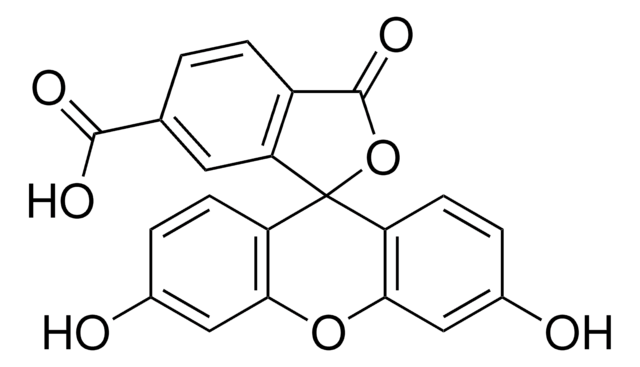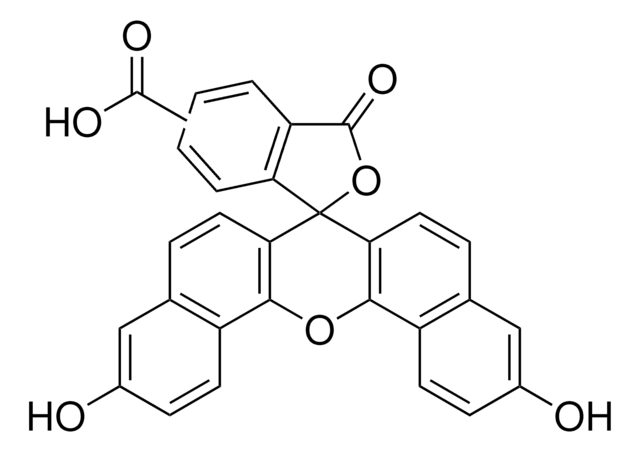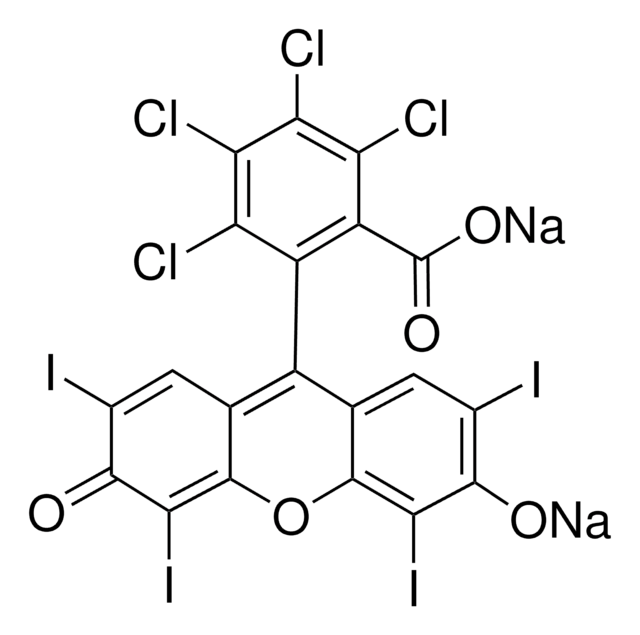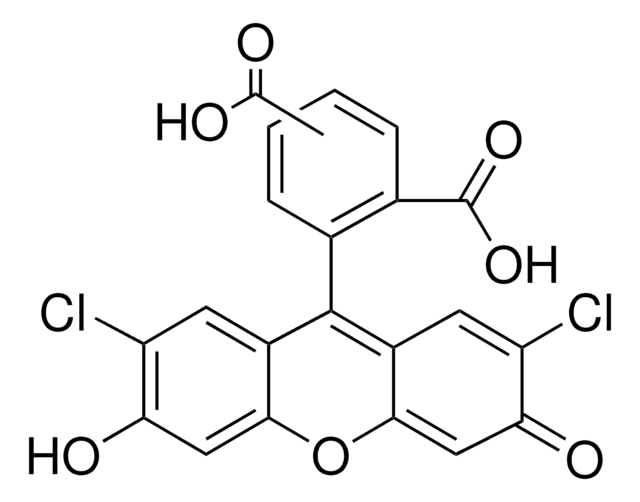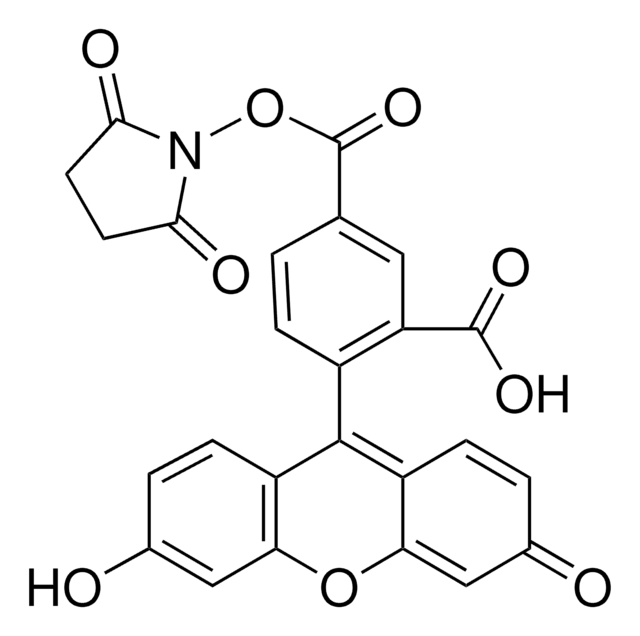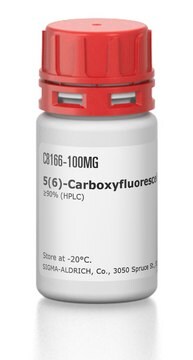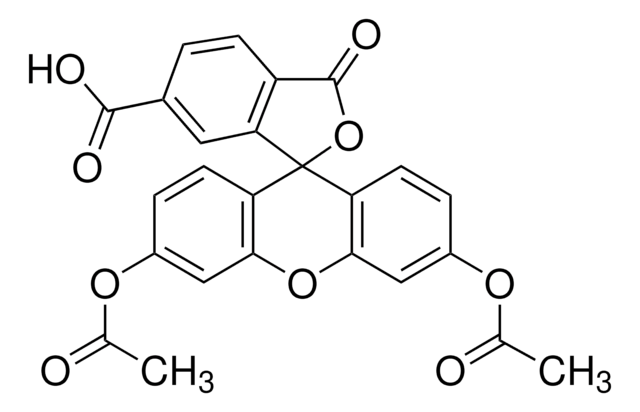Wichtige Dokumente
21877
5(6)-Carboxyfluoreszein
suitable for fluorescence, BioReagent, ≥95% (HPLC)
Synonym(e):
5(6)-FAM, 5,6-CF
About This Item
Empfohlene Produkte
Produktlinie
BioReagent
Qualitätsniveau
Assay
≥95% (HPLC)
Form
powder
mp (Schmelzpunkt)
275 °C (dec.) (lit.)
Fluoreszenz
λex 492 nm; λem 517 nm in 0.1 M Tris pH 8.0
Eignung
suitable for fluorescence
SMILES String
OC(=O)c1ccc2c(c1)C(=O)OC23c4ccc(O)cc4Oc5cc(O)ccc35.OC(=O)c6ccc7C(=O)OC8(c9ccc(O)cc9Oc%10cc(O)ccc8%10)c7c6
InChI
1S/2C21H12O7/c22-11-2-5-15-17(8-11)27-18-9-12(23)3-6-16(18)21(15)14-4-1-10(19(24)25)7-13(14)20(26)28-21;22-11-2-5-14-17(8-11)27-18-9-12(23)3-6-15(18)21(14)16-7-10(19(24)25)1-4-13(16)20(26)28-21/h2*1-9,22-23H,(H,24,25)
InChIKey
BPVHBBXCESDRKW-UHFFFAOYSA-N
Suchen Sie nach ähnlichen Produkten? Aufrufen Leitfaden zum Produktvergleich
Allgemeine Beschreibung
- Es weist 2 Wellenlängen der maximalen Absorption auf (465 und 490 nm).
- Seine Fluoreszenzemission bei 515 nm (max.) steigt als Funktion des pH-Werts im physiologischen Bereich von 6–7,4.
Anwendung
Sonstige Hinweise
Lagerklassenschlüssel
11 - Combustible Solids
WGK
WGK 3
Flammpunkt (°F)
Not applicable
Flammpunkt (°C)
Not applicable
Persönliche Schutzausrüstung
Eyeshields, Gloves, type N95 (US)
Analysenzertifikate (COA)
Suchen Sie nach Analysenzertifikate (COA), indem Sie die Lot-/Chargennummer des Produkts eingeben. Lot- und Chargennummern sind auf dem Produktetikett hinter den Wörtern ‘Lot’ oder ‘Batch’ (Lot oder Charge) zu finden.
Besitzen Sie dieses Produkt bereits?
In der Dokumentenbibliothek finden Sie die Dokumentation zu den Produkten, die Sie kürzlich erworben haben.
Kunden haben sich ebenfalls angesehen
Artikel
Nitric oxide (NO) as a signal transporter in neurons, endothelial cells and in the immune system.
Unser Team von Wissenschaftlern verfügt über Erfahrung in allen Forschungsbereichen einschließlich Life Science, Materialwissenschaften, chemischer Synthese, Chromatographie, Analytik und vielen mehr..
Setzen Sie sich mit dem technischen Dienst in Verbindung.
